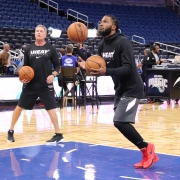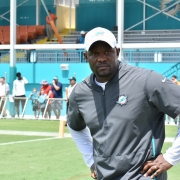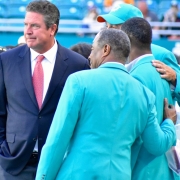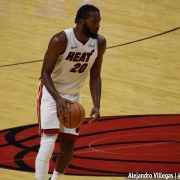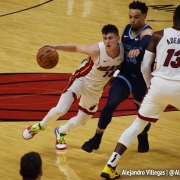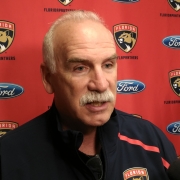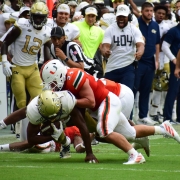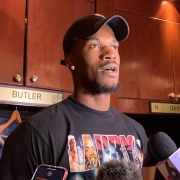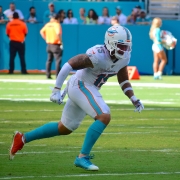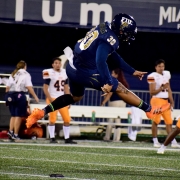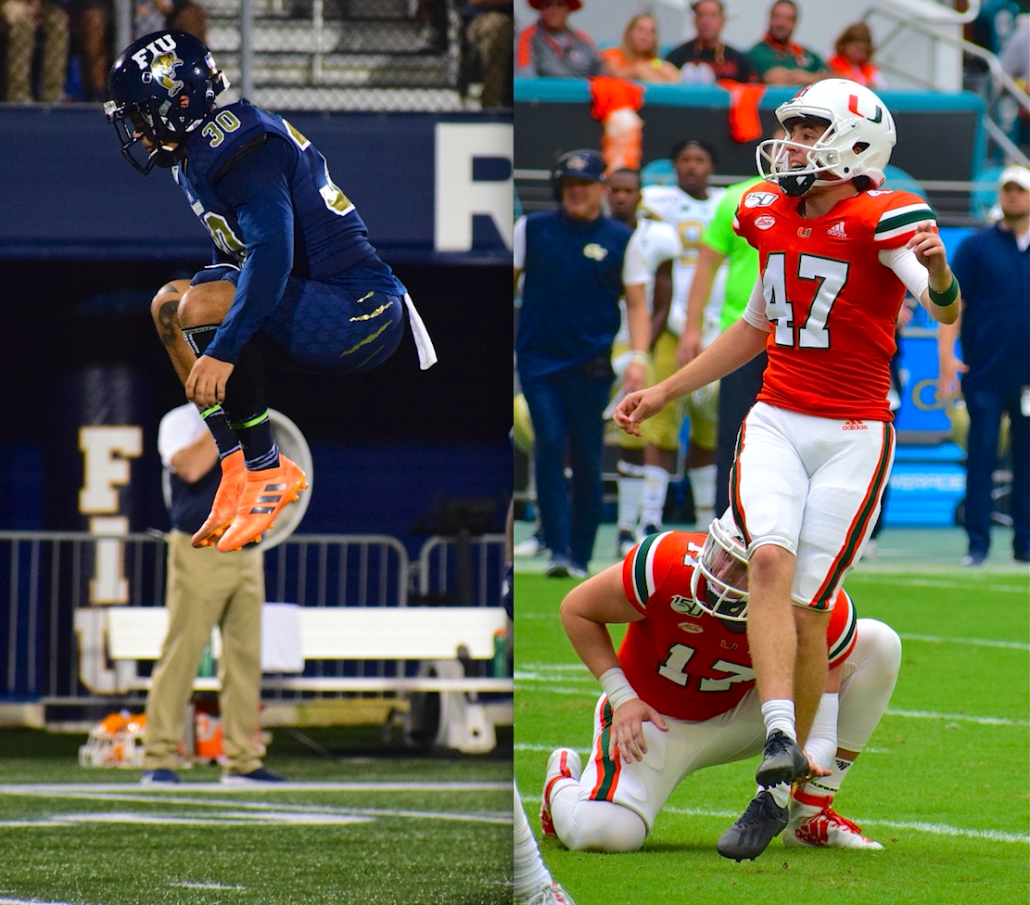Guts Check: Introduction + Early Miami Heat Observations
Welcome to the first edition of Guts Check. A weekly column aimed at bringing readers my perspective on all the hot topics surrounding the Miami Heat. You can expect a regular balance of intel, analysis and a window into the mind of the fan base. Hopefully it can develop into a weekly thermometer of just how much the Heat is on.
My intention is for this to stay fresh. One week it may be player performance focused, the next week rumor heavy or discussion on rotations. We probably will even take some trips down memory lane or spend time hope trafficking about the future. Let’s call it position-less. Trust the Spocess.
In the spirit of having the Guts (as The Godfather so eloquently put it) this is going to be the genuine authority on all things Miami Heat.
That’s the intro, now IT IS TIME. (as Jax so emphatically puts it)
#JustiseBetter still….
Justise Winslow has arrived.
It could be argued that no player has benefited from Jimmy Butler’s absence in the early going as much as Winslow. Not because he or the team is better without Butler of course, but more because I think it allowed him to build up the confidence that has proven to be so vital to his ability to flourish. I believe these moments as the alpha are going to help as the season progresses and Butler looks for other “dogs” (as Winslow calls them) to depend upon.
Justise Winslow on earning the chance to be the feature guy on Opening Night pic.twitter.com/LLF9lf8fTF
— Brendan Tobin (@Brendan_Tobin) October 24, 2019
Despite the stellar start for Bam Adebayo and the emergence of Kendrick Nunn (more on both of those guys in a moment), I believe Justise Winslow has been the best player through 3 games for the Heat.
Winslow has done it all and aside from some free throw struggles, has continued to be BETTER than he was even at the end of last season when he appeared to find his game.
There are two players in the NBA currently averaging 19+ PTS, 9+ REB, 6+ AST, 1+ STL, and 1+ BLK:
Giannis Antetokounmpo
Justise Winslow#JustiseBetter— Christian Hernandez (@ICanBeYourHerro) October 28, 2019
These two plays essentially sum up the type of all-around excellence Winslow has provided the team through 3 games:
On offense:
Great defense by Bam, and then Justise Winslow makes the pass of his life.
My CHEST. pic.twitter.com/s0jtqyfv7F
— Jasmine Thomas Fan Acct. (@NekiasNBA) October 27, 2019
On defense:
Enjoy Justise Winslow's defense. pic.twitter.com/OXM2QGURxK
— Couper Moorhead (@CoupNBA) October 26, 2019
The trio of Nunn, Winslow and Butler in the starting lineup is particularly intriguing when you consider Nunn’s ability to score in bunches combined with the defensive versatility of the trio to switch everything. We can’t wait to see this trio on Tuesday night.
BAE – The Bam Adebayo Experience
Since the moment Adebayo was drafted, people around the Heat have considered Bam the recent Heat draftee with the highest ceiling. That showed itself in countless ways the first week of the season for the Heat.
Whether it was making quick work of a double-double in a opening night win versus Memphis, having an absolutely masterful performance versus Giannis Antetokounmpo and the Bucks, to his defense on Karl Anthony Towns in the last 3 quarters of Sunday’s matchup, Adebayo has been awesome.
It helps that he is also putting in a good word for HEAT Culture to the current Bucks star after the game on Saturday:
Whispering in the ear. Who called it on the last @miaheatbeat podcast? Lol https://t.co/Dyj0C7AJIe
— Greg Leif Sylvander (@GregSylvander) October 27, 2019
If Adebayo continues this play, he is quickly going to be vying for Most Improved Player.
Any idea how to stop Kendrick? Answer: Nunn.
Heat rookies have had 1 good game to begin a season before, Willie Burton comes to mind. (I am showing my age). But make no mistake, Nunn is not Burton, this kid can play. The question has become, is this closer to a flash in the pan, or panning out like Flash?
67 points for the rook. @nunnbetter_ is off to a historic start. 🔥 pic.twitter.com/hzzfzh4J5T
— Miami HEAT (@MiamiHEAT) October 28, 2019
I know, I am getting way ahead of myself. However, from summer league to preseason and the first 3 games of the regular season, has Nunn had a bad game? The answer is likely no. Spoelstra just can’t keep him off the floor.
If Nunn proves to be this type of scoring threat all season, it dramatically changes the ceiling of this Heat team. If not for Trae Young starting the season unconscious from every angle of the court, Nunn would have likely won Eastern Conference Player of the week. He has been that good.
Side note: Nunn vs Young is coming up twice this week. FUN.
Quick Hits:
- Chris Silva has the Guts. Silva had to have been injected with UD’s blood at halftime of the home opener versus Memphis. Although Silva is likely heading to Sioux Falls relatively soon, it’s nice to see an additional big man in the pipeline that appears ready to contribute sooner rather than later.
- Is Goran Dragic the 6th man of the year in the making? Likely to lead the team in scoring once every couple weeks (see that Bucks game). If he continues to flourish in his bench role, could he follow in the footsteps of Alonzo Mourning as a Heat All Star turned key cog off the bench on a contender? While Goran was certainly dangled in trades over the summer, and still carries a valuable expiring contract for potential future deals, his handling of this transition to the bench is the stuff Heat Lifers are made of.
- Tyler Herro has quietly been very solid through the first 3 games as a starter. Despite his rookie mistakes, overall he just looks like he belongs and has had moments where you really see the intriguing potential. His move to the bench with the return of Jimmy Butler is going to make the reserve unit even more potent. Again, Tuesday’s match up versus Atlanta can’t come soon enough.
That’s all for this week Heat Nation. If you’ve got the guts you will be back next week.
